Labor Union Test
1/50
There's no tags or description
Looks like no tags are added yet.
Name | Mastery | Learn | Test | Matching | Spaced |
|---|
No study sessions yet.
51 Terms
AFL-CIO
The American Federation of Labor and Congress of Industrial Organizations (AFL-CIO) was created in 1955 through the merger of the American Federation of Labor (AFL) and the Congress of Industrial Organizations (CIO).
voluntary federation of 55 labor unions; it fights for workers’ rights through activism and political advocacy. The AFL-CIO advances legislation and advocates for creating good jobs, investing in schools and transportation, minimum wage, strengthening Social Security and pensions, ensuring fair tax policies, and making high-quality, affordable health care available to all.
Arbiration
This is a formal process whereby a third party (the arbitrator) settles a dispute between an employer and the union by holding a hearing and issuing a final decision if the parties can’t agree on their own.
It is similar to a court case, where both employer and employee present their evidence, and the arbitrator acts as the judge. If a labor-management dispute cannot be resolved through the grievance process, the last step is arbitration.
Bargaining Agent/Exclusive Bargaining Representative:
This refers to the organization that will represent a specific group of workers in bargaining a contract. Instead of individuals bargaining their own contracts, there is one organization representing all workers in a particular bargaining unit. “The union,” as it is usually referred to, is the only group with whom an employer is allowed to and required to negotiate wages, hours and working conditions.
Bargaining Unit
The group of workers that is represented by a particular union is called the bargaining unit.
Some workplaces might have one bargaining unit. Other workplaces have several bargaining units -- for example, in a school the teachers might be in one bargaining unit, while the bus drivers are in another unit.
Each bargaining unit negotiates a contract that covers its members and relates to their specific jobs
Boycott
organized effort to stop patronizing a company or a particular product, in order to pressure a company or an industry to recognize a union or to change its practices.
For example, beginning in the late 1960s, the United Farm Workers union employed a series of boycotts in an attempt to gain recognition for grape and lettuce fieldworkers. Recently, Driscoll’s berry distributor became the target of a boycott due to its record of unfair labor practices.
Central Labor Councils
State federations and central labor councils are the heart of the labor movement. Central labor councils (CLCs) and Area Labor Federations (ALFs) are made up of representatives of labor unions in their area. These local organizations partner with state and community organizations and conduct state, local and national campaigns to improve the lives of working families
Collective Bargaining
The negotiation process between an employer and the union is called collective bargaining, because the union negotiates for all workers in its bargaining unit.
During collective bargaining (also known as contract negotiations), representatives for the employer/management and the employees/union sit down to talk about what should be included in their next Collective Bargaining Agreement (also called the contract). Both parties will make proposals related to wages, hours, working conditions, benefits, and much more.
At the end of the bargaining process, they will have a new contract to govern the workplace for a specified number of years.
Grievance
This is a formal complaint process that is used when an employer violates or misinterprets the collective bargaining agreement.
The grievance procedure makes the workplace more democratic because it provides a format for an employee to say something wasn’t fair at work and then to engage with the employer on the dispute until a solution is reached.
If a solution can’t be agreed upon between the employer and employee raising the concern then the grievance process allows for several steps to work toward resolution, ending with a decision by a neutral party that hears the evidence from both sides and makes an impartial decision.
Just Cause
Just cause is the highest form of job protection that most unionized employees have in their contracts. It states that an employer cannot fire or discipline an employee without a good reason.
If a union contract guarantees just cause, in order to discipline or fire an employee the employer must show that the worker has not done their job or has acted inappropriately, after having had a chance to improve their performance.
Without just cause -- in non-union workplaces in Massachusetts -- there is “employment at will” which means that a boss can fire a worker for any reason at all (as long as it’s not discrimination based on race, sex, gender, sexual orientation, or age) without having to provide a reason or give any notice. Without just cause, an employer is free to fire an employee using arbitrary or unfair criteria
Lockout
a lockout is similar to a strike, however, it is initiated by management and is also usually prohibited in a collective bargaining agreement. When there is a labor dispute, sometimes management will refuse to let employees come to work.
The word “lockout” derives from when employees would physically be locked out of factories. When management engages in a lockout, they often hire temporary workers to replace the workers that are locked out.
Those who accept this type of work, or who otherwise do business with a company engaged in a strike or lockout = “scabs.”
Mandatory Subject of Bargaining
Mandatory subjects of bargaining are items that directly impact wages, hours, or working conditions. Being in a union means that an employer has to negotiate with you over these subjects. If the union makes a proposal that would increase your wages, give you more job security, or improve your workload, the employer must discuss the proposal in “good faith.”
National Labor Relations Board (NLRB):
a government agency in charge of enforcing U.S. labor law for private companies. Members of the board are appointed to five-year terms by the U.S. President.
National Labor Relations Act (NLRA):
also known as the Wagner Act, an act passed in 1935 that protects the rights of employees and gives them explicit rights to form unions. When it was passed in the 1930s it was the first time, the NLRA guaranteed that workers’ representatives must have the same rights as employers, including the right to sit across the table as their equals
Picket Line
a group of workers on strike, asking people not to enter the building or engage with the employer. Workers hold signs and create visible presence to raise awareness of the issues, and to ask people to support the union and not to work with the company until the strike is settled.
Right to Work Laws
Legislation that takes union rights away from workers by making it more difficult for workers to form unions and collectively bargain. Right to work laws allow workers to not pay union dues which are vital to union operations. These laws are pushed forward by big business interests and are named as “Right to Work” to obscure the fact that they actually take away labor rights from workers.
Salt
someone who works for a company or employer with the intention of organizing the workers into a union. “Salting” is one tactic that unions may use to connect with workers and talk with them about the benefits of forming a union. The salt is a regular employee of the company
Social Justice Unionism: u
unions that focus on defending the rights of the larger community and forming coalitions with community groups and other social movements.
Union Density
union density is a percentage of workers who are members of unions in a city, in an industry, or in larger geographic areas
Samuel Gompers
(AFL 1886-1894; 1895-1924)
John McBride
(AFL 1894-1895)
William Green (AFL 1924-1952)
William Green was the second long-term president of the American Federation of Labor, serving from 1924 until his death in 1952. An advocate of labor-management cooperation, legislated wage and benefit protections and industrial unionism, he continued the federation's evolution (begun under its first president, Samuel Gompers) away from the "pure and simple unionism" of its origins and toward the more politically involved "social reform unionism" characteristic of mid-century.
John L. Lewis (CIO 1938-1940)
President of the United Mine Workers of America (UMWA) from 1920 until 1960 and founding president of the Congress of Industrial Organizations (CIO), John Llewellyn Lewis was the dominant voice shaping the labor movement in the 1930s. The CIO owed its existence in large measure to Lewis, who was a tireless and effective advocate of industrial unionism and of government assistance in organizing basic industry.
Philip Murray (CIO 1940-1952)
Philip Murray was president of the Congress of Industrial Organizations (CIO) during its most tumultuous decade and helped transform the volatile movement of industrial unions begun by John L. Lewis into a stable and powerful organization. As president of the CIO, Murray cemented the alliance between the industrial unions and the liberal wing of the Democratic Party. He also created a more amicable relationship with the larger and older American Federation of Labor (AFL), laying the foundation for the merger of the CIO and the AFL in 1955.
Walter Reuther (CIO 1952-1955)
Walter Reuther was president of the United Automobile Workers (UAW) from 1946 until his death in 1970. Reuther became president of the Congress of Industrial Organizations (CIO) in 1952 after the death of Philip Murray; he immediately joined with George Meany, president of the American Federation of Labor (AFL), to negotiate a merger between the two groups, which took effect in 1955. Reuther became director of the federation's Industrial Union Department (IUD). As head of the IUD, Reuther called for large-scale 1930s- style organizing drives and broad-based grassroots political action committees. He fought tirelessly for civil rights protections and an enhanced welfare state that would benefit all Americans.
George Meany (1955-1979); (AFL: 1952-1955)
George Meany was the builder of the modern AFL-CIO. He was born into an Irish Catholic family in New York City. In 1910, Meany joined the United Association of Plumbers and Pipe Fitters as an apprentice at the age of 16, working as a plumber in New York for the next decade. After rising through the ranks of union leadership, Meany was elected to the presidency of the AFL in 1952 on the death of William Green. He assumed the leadership of a divided labor movement. Many of the nation's industrial unions were part of the Congress of Industrial Organizations (CIO), which had been created in the 1930s. He immediately sought to unify the movement, an effort that culminated in the founding convention of the AFL-CIO in 1955. Meany was elected unanimously asthe first president of the merged labor federation. Meany modernized and expanded the national AFL-CIO, making the organization a powerful voice in the nation's political and legislative arena. Under his leadership, the American labor movement won unprecedented gains for ordinary working Americans. Meany, a staunch supporter of civil and equal rights his entire career, put the federation's muscle behind the civil rights movement, insisting that the historic 1964 Civil Rights Act call for an end to both workplace and community discrimination.
Lane Kirkland (1979-1995)
Upon Meany's retirement in 1979, Lane Kirkland was unanimously chosen to lead the federation. President of the AFL-CIO from 1979 to 1995, Kirkland inherited a labor movement under heavy assault. Moving quickly to stem labor's decline, Kirkland initiated significant institutional innovations and secured the re-affiliation of almost all the large national unions that remained outside the AFL-CIO. Kirkland also nominated the first woman to the AFL- CIO's Executive Council and increased the role of African Americans, Latinos and Asian Americans in the organization.
Thomas R. Donahue (1995)
John Sweeney (1995-2009)
John J. Sweeney was first elected president of the AFL-CIO in 1995 on a platform of revitalizing the federation. The 1995 election was the first contested election in AFL-CIO history. Previously, Sweeney served for 15 years as the president of the Service Employees International Union.
Richard Trumka (2009-2021)
Richard Trumka was president of the AFL-CIO from 2009-2021. He joined an insurgent campaign and was elected secretary-treasurer of the AFL-CIO in 1995 prior to being elected president in 2009. He served as the President of the United Mine Workers from 1982 to 1995.
Liz Shuler (2021-Present)
Liz Shuler is the current president of the AFL-CIO. She was elected in 2021 and previously served as the organization's Secretary-Treasurer. She is the first female to serve as President of the AFL-CIO, and was also the organizations youngest ever Secretary-Treasurer. President Shuler began her union career with IBEW Local 125 in Oregon.
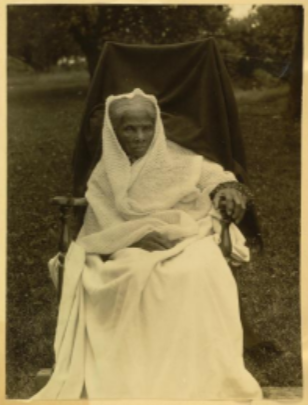
Harriet Tubman (1822 - 1913)
Harriet Tubman was born into slavery in Maryland during the early 1800s. In her late twenties, she escaped her master and traveled to Philadelphia, and then returned to save her family. For the next ten years, Tubman was a “conductor” in the Underground Railroad and guided over 300 slaves to freedom. Harriet Tubman was a leading figure in abolitionism, the movement to end slavery. She helped John Brown with the raid on Harper’s Ferry, an armed slave revolt that, while ultimately unsuccessful, caused discussion and debate among Northerners and Southerners and called into question the legitimacy of slavery. As you will learn later in this guide, Harriet Tubman’s work is an integral part of the beginning of labor history in the US because slavery was the result of increased demand for labor, and abolitionists who fought against it were participating in strikes and other forms of withholding labor. This ultimately laid the groundwork for unions and labor activism today.

César Chávez (1927 - 1993)
César Chávez was a Mexican American farm worker, labor leader, and Latinx civil rights activist. After years of facing prejudice for being Mexican as he was working various jobs in the army, as a ranch hand, and in a lumber company, he decided to become an organizer for the Community Services Organization (CSO). CSO was a Latinx civil rights group and Chávez’s job was urging Mexican Americans to register to vote. In 1958, he became the national director of CSO. Chávez, along with Dolores Huerta, left CSO and founded the National Farm Workers Association (NFWA) in 1962. This organization is now called the United Farm Workers (UFW); it is the nation’s largest union of farmworkers with over 10,000 members. The main goal of the NFWA was to advocate for farm workers’ rights to higher wages and to collectively bargain, and the union was successful in joining forces with other labor organizations such as the AFL-CIO to protest, boycott, and strike for farm worker rights. César Chávez is considered a hero by farm workers and other workers all over the world.
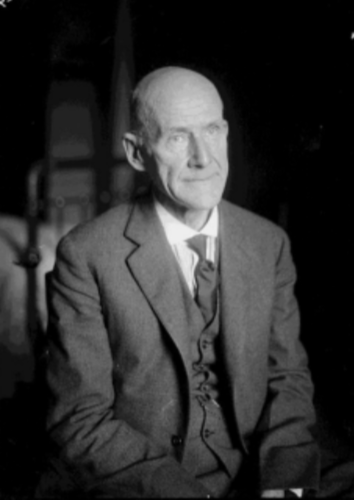
Eugene V. Debs (1855 - 1926)
Eugene Debs was a leader in the labor movement and in politics. He was active in the Brotherhood of Locomotive Firemen and later co-founded the American Railway Union, the Industrial Workers of the World, and the Socialist Party of America. As President of the American Railway Union, Debs helped broaden industrial unionism (a form of unionism where all workers in an industry, such as auto workers, become unionized) and advocated that the union should be for all workers regardless of skill -- unlike many unions at the time that wanted to represent only highly skilled workers. Debs went to jail for leading an illegal strike, but it only strengthened his resolve to keep organizing workers. As Debs became more radicalized, he formed the Industrial Workers of the World (IWW) which sought to take control of industry. The IWW believed there should be “one big union” as opposed to many small craft unions, and held radical political views compared to the AFL. The IWW was founded on the ideal of a peaceful workers’ revolution and aimed to organize the entire working class in solidarity. Debs eventually ran for president of the United States five times as a Socialist, and then ran for Congress in an attempt to establish a more socialist U.S.
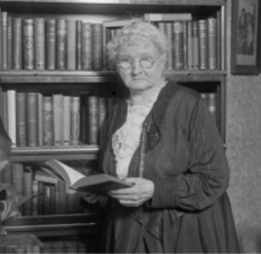
Mother Jones (1837 - 1930)
Mother Jones, whose real name was Mary Harris Jones, was a community organizer and a prominent labor organizer in the late 1800s. She worked with the Knights of Labor and the United Mine Workers union, and she co-founded the Industrial Workers of the World (IWW). She was called “the most dangerous woman in America” by U.S. District Attorney Reece Blizzard, because she was so successful at organizing mining families against mine owners. Mother Jones’s approach to organizing was much different from most people at the time because she included African-American workers, women, and children when organizing strikes. Due to her incredible success, Mother Jones was often banished from mining towns and jailed many times. Mother Jones was also instrumental in organizing against child labor, eventually leading a march of 100 children to President Theodore Roosevelt’s home on Long Island, to protest the use of children working in mines and silk mills.
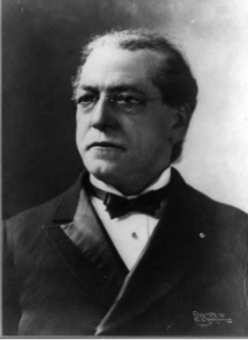
Samuel Gompers (1850 - 1924)
Samuel Gompers was the first president of the American Federation of Labor (AFL) (1886 -1894 and 1895-1924), the largest coalition of labor unions in the United States. Under his guidance, the AFL’s influence grew in the US and abroad. While some unions were focused on generalized strikes and political action, Gompers used a different approach that revolved around three principles, which he thought would be most effective to win rights for union workers. The first of his three principles was craft and trade unionism. As opposed to Eugene Debs, who wanted everyone to unionize into one general union under the IWW, Gompers favored more specialized unions by trade and craft. Gompers also promoted “pure and simple unionism,” an ideology that advocated against unions becoming very politically involved and simply focus on improving the economic conditions of members. While many unions and labor organizations had political affiliations and endorsed candidates and political parties, Gompers thought that the labor movement would be more successful if it focused on action in the workplace, improving wages and workers’ rights rather than forming political coalitions. Finally, Gompers believed that the labor movement should practice political nonpartisanship and focus on supporting candidates who were on the side of labor, no matter what political party they represented.

Ai-jen Poo (1974 - present)
Ai-jen Poo is the Executive Director of the National Domestic Workers Alliance. In 2000, she co-founded Domestic Workers United in New York, an organization of nannies, house cleaners, and caregivers. Lead by Poo, the group fought a seven year battle to pass the Domestic Workers’ Bill of Rights which entitled this group of workers to overtime pay, one day off per week, protection from discrimination, and three days of paid leave per year. Poo was recently instrumental in the Department of Labor’s change to include caretakers of elderly and disabled persons in federal minimum wage and overtime protections. Her focus is largely on building coalitions and finding common ground across diverse groups of people to leverage collective power and improve the working conditions of domestic workers. Her campaign, Caring Across Generations, aims to change long-term care in the US by providing better care for elderly and disabled people while improving job quality for caretakers.

A. Phillip Randolph (1889 - 1979)
A. Phillip Randolph was one of the most important labor and civil rights leaders of the 20th century. In the 1920’s, Randolph worked to organize and became the president of the Brotherhood of Sleeping Car Porters (BSCP) union. The BSCP was most notable for being the first predominantly African American union to be recognized. Before the union, black workers at the Pullman Company, which was the largest employer of African Americans at the time, faced poor wages and widespread racial discrimination. Randolph led the BSCP to win its first contract in 1937 which brought massive pay increases for workers alongside a shorter work week and overtime pay. During World War II, Randolph threatened to bring over 100,000 workers on strike in response to discriminatory practices in the defense industry, leading President Roosevelt to order an executive order banning discrimination in this labor market as well as establishing a Fair Employment Practices Commission to monitor employers’ hiring practices. On top organized labor, Randolph led many civil rights campaigns. Most famously, Randolph organized the 1963 March on Washington for Jobs and Freedom, often remembered for Martin Luther King Jr’s I Have a Dream speech
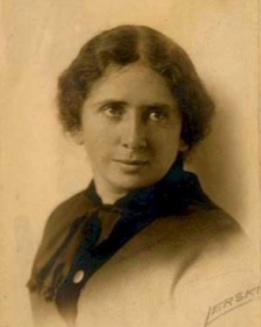
Rose Schneiderman (1882 - 1972)
Rose Schneiderman was a prominent labor leader as well as a feminist and suffragist who worked to advance the rights of women in the labor movement and in government. Schneiderman was a member and elected leader of the Women’s Trade Union League (WTUL) of New York which organized women into unions and fought against sweatshop labor. Schneiderman was actively involved in the Uprising of 20,000 which protested against the conditions of immigrant workers in the garment industry. She continued her work against unsafe working conditions after the Triangle Shirtwaist Factory fire of 1911 which took the lives of over 100 workers, many of them young, immigrant women. As a suffragist, Schneiderman fiercely advocated for women’s right to vote. During the 1930’s, Schneiderman served in the Roosevelt administration on the Labor Advisory Board and continued to advance the interests of women, immigrants and workers in government
What is a union?
A union is a group of workers who join together at their workplace to improve their working conditions through collective action on and negotiating a contract with their employer around wages, hours, and working conditions. A union gives workers a voice and respect on the job. Unionized workers are able to negotiate better wages and benefits in the workplace, as well as grievance procedures to make sure they are treated fairly.
What is the labor movement?
When unions from many different workplaces and many different industries join together to support each other and to advocate for public policies that promote fairness, equality and opportunity for all working people, they are acting as a labor movement. Just like other movements you may know of, like the civil rights movement or the women’s movement or the gun control movement, the labor movement combines the collective power of all workers to make a better world.
What types of workers have unions?
The first groups of workers to form unions were artisans, railway workers, miners, factory workers, and construction workers. However, now unions represent an incredibly diverse group of employees in all industries and professions -- including, for example, nurses, bus drivers, writers, engineers, teachers, office workers, flight attendants, pilots, farm workers, actors, firefighters, student workers, and many more.
How does a union work?
Unions are very diverse and all unions work differently, but there are three principles of
almost all unions:
1. They are chosen through a democratic process at the workplace,
2. The highest governing body in a union is the membership
3. Unions are funded by their members through union dues
A union most often represents all workers who do a similar job in one workplace, but sometimes a union can represent all of the non-management employees in a workplace. The group that is eligible for union membership is called the bargaining unit. Members make decisions for their unions and elect leaders to represent their interests. Union members are part of a local union, which is usually defined in a particular workplace or region, and the local union falls within a larger national or international union.
How do workers form a union?
Forming a union is all about democracy in the workplace: workers have the right to choose to organize and to represent their interests. When workers form a union it usually begins by getting together with other co-workers to share common concerns. For example, if you’re a retail worker, you might identify issues such as low pay, unfair scheduling and hours, wage theft, unfair treatment from management, discriminatory practices, or other problems as commonplace. You can use these issues in organizing to underscore why your workplace needs a union. From there, your next step is likely to go to a local union to get the help from organizers. These workers would then talk to a local union and work with organizers to build support for the union among the other workers. If most employees are interested in organizing a union, they can show this support through simply signing a union card or they can hold an election. A card-check is when employees sign union authorization cards showing their support for a union in the workplace. When more than 50% of employees submit cards, the employer can recognize the union voluntarily. If the employer refuses to do so, workers can contact the National Labor Relations Board (NLRB) to hold a secret-ballot election where workers can vote on whether or not they wish to form a union. If employees vote for the union in the official election, the employer must recognize the union and negotiate with the workers. The process is simple unless employers interfere to thwart a unionization effort.
There are other ways to join a union as well. If you want to work as an electrician or pipefitter or construction worker, you can apply for an apprenticeship program where the union, in partnership with their signatory contractors, teaches you the trade and gives you experience on the job site. When you graduate the program the union then helps you find jobs.
What benefits do workers have?
Being in a union means that you can come together collectively to voice your concerns in your workplace, and work collectively to create concrete changes. Union workers bargain a new contract every few years to improve their wages, hours, and working conditions. This makes union membership critical for bettering the lives of working people. On average, unionized workers have substantially higher wages than non-union workers. Women and people of color in particular earn significantly more as union members. Many unions also fight for policies that benefit the entire community. When teachers’ unions negotiate for smaller class sizes and more nurses and librarians to support students, when nurses bargain for safe staffing ratios to protect patients, when 3 construction unions negotiate jobs for women and people of color, or for affordable housing options in the community, this is known as “bargaining for the common good.”
On top of these added benefits, union workers have greater employment security. If workers do not have unions they do not have the right to negotiate their wages and working conditions, and their jobs are not legally protected. In fact, if a manager does not like a non-union worker, they can fire them for any reason, which is known as at-will employment. Workers who speak up about safety concerns or workplace conditions are more likely to be targeted by an employer for being fired. Women, people of color, immigrants, and LGBTQ workers are also most likely to face discrimination in the workplace. A worker has very little job security without a union. With a union, collective action is protected by law.
What are Public Sector-Unions vs. Private-Sector Unions?
Unions are often distinguished between public-sector and private-sector. You have the right to form a union whether you work for a private company or non-profit organization (private sector) or for the government (public sector). Under the federal Wagner Act of 1935 (also known as the National Labor Relations Act), private-sector employees have the right to form unions. However, the Wagner Act does not cover public-sector employees; each state has its own laws regulating labor organizations. In Massachusetts, government employees are protected by federal laws, such as the Fair Labor Standards Act (FLSA) as well as Chapter 150(e), the state law that gives public-sector employees the right to unionize and bargain collectively.
Why do union members pay dues?
Union members pay dues to support the union to work on behalf of all workers. Dues cover the costs of negotiating collective bargaining agreements and enforcing the contract every day. Union dues pay for staff salaries, legal fees, union organizers, strike funds, grievances and arbitrations, and much more. Without paying dues, workers would not be able to afford many of the legal protections that are afforded to them by being in a union.
Do unions participate in political action?
As a labor movement, unions stand up for the rights of all workers, including those who are in unions and those who are not yet organized. Some of the most important work that unions do is in the political and legislative arena, fighting for rights and policies that benefit working people and their communities. Many unions work actively to register members to vote and encourage political activity. Many unions research the candidates that support the issues important to their members, and some endorse political candidates who will further those interests. All of these decisions vary depending on the union and the priorities of the membership and leadership -- but most unions engage in advocacy around political issues that matter to their members, including minimum wage, access to affordable health care, social security, funding for quality public education, workplace safety, and more.
Harriet Hanson Robinson
1825-1911
When she was ten years old in 1835, Harriet Hanson Robinson went to work at a brand new textile factory in Lowell, Massachusetts.
The Boston investors made huge profits but in the early 1830s, the increasing number of mills meant overproduction of textiles, and prices began to fall quickly. The owners responded by cutting the workers’ wages and speeding up the pace of work. They organized one of the first strikes of cotton factory workers in the U.S., in 1834, and another in 1836.
The strike of 1836 began when the girls were told that their wages would be cut by at least one dollar a week
Harriet was 11 years old when 1500 Liz Shuler (2021-Present)
11 girls walked out from her factory, marching down Lowell’s streets. They sang songs
The workers won their fight and the wage cuts were reversed.
Harriet Hanson Robinson continued to be an activist for women’s rights, workers’ rights, and women’s right to vote.
Francisco Jimenez
1943 - Present
Francisco Jiménez never went to school in September or October when he was a child.
His parents were migrant workers, and his job was to help them with the harvest. Starting at the age of six, he worked for 12 hours a day, seven days a week in the strawberry fields in Santa Maria, California.
Then they would travel 250 miles to San Joaquin Valley to pick grapes through the end of October.
In November, they would move to Corcoran to pick cotton by hand until late December
The Jiménez family had crossed the border into the United States from Tlaquepaque, Mexico when he was four years old in 1947.
Jimenez failed the first grade, but persisted, eventually becoming student body president of his high school.
Jiménez found supportive teachers, and everything, he became a professor of Ethnic Studies at Santa Clara University and even being named Professor of the Year by the Carnegie Foundation. Jiménez urges young Latinx people to transform their lives through education and solidarity.
German Lopez
1990 - Present
When writers and staff at Vox Media decided to organize a union in 2017, German Lopez opposed the idea. Lopez, a senior writer at the website Vox.com,
Two weeks later, Lopez had learned more about unions, and he stated publicly that he had changed his mind. His coworkers reminded him that, although things were good for him at the moment, the company’s generosity was not set in stone, and at any time new management could take away the rights and benefits he enjoyed. Workers at other online media companies, including Vice Media, ThinkProgress, Salon, Thrillist, MTV News, and HuffPost organized unions and negotiated contracts, winning improved job security, wages and benefits.
In December 2017, Lopez posted that he had signed a union card. He and his coworkers voted to join the Writers Guild of America East, which represents many groups of digital media employees. Vox management recognized the union and stated that they expected the union to improve the workplace and make Vox a great company.
o